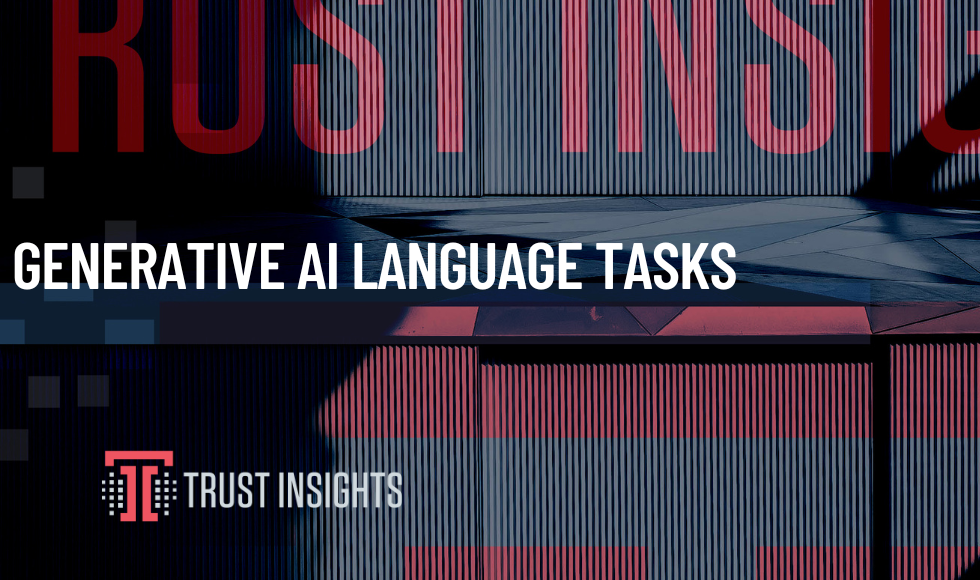This data was originally featured in the April 3rd, 2024 newsletter found here: INBOX INSIGHTS, APRIL 4, 2024: AI DATA GOVERNANCE, GENERATIVE AI LANGUAGE TASKS
In this week’s Data Diaries, let’s go over an important distinction about generative AI, large language models, and language tasks.
One of the pieces of advice we regularly follow is to try using AI for everything, especially language tasks. Language models, unsurprisingly, are really good at language tasks such as writing, classifying sentiment, summarization, and many others.
Equally unsurprising, they’re not particularly good at tasks that aren’t language tasks, like math. Many of today’s tools get around challenges like this to some degree by writing code in the background that can do math, executing the code, and returning the math results to us as though they had done the computation.
This distinction is important when deciding what type of AI to use for any given problem. This week, I had the pleasure of speaking with the Lab Products Association membership about generative AI and doing a hands-on workshop with them. One interesting question I was asked highlights our language/non-language distinction.
One of the members asked, “We want to set up a recommendation system with generative AI so that if you put something in your cart, it recommends other things from our product catalog.” On the surface, this seems like a language task, right? There’s a product, the product has a name, the name is made with words, and other products have names and words too.
Except it’s not a language task. It’s actually a symbolic task – a task where the language doesn’t really matter. What this member cares about is associating one entity with another, and that’s symbols, not language. In some cases, language will work; after all, if I look at the phrase “peanut butter”, jelly is likely to be associated with it in language texts. This works when you have very common pairings. When you have infrequent pairings, this doesn’t work.
And when you have a product catalog from your specific store, what you care about as a store owner is recommending more things from your store that other customers buy, not necessarily generic word associations.
If you took the language away – if peanut butter was instead written as B07KWH27FN, you would still be able to do associations using classical AI. You’d know that B074J9RHF8 was most closely associated in other purchase carts with B07KWH27FN and be able to make that recommendation no matter what these products were – that’s the nature of a symbolic task.
So what? Why does this matter? Because generative AI is computationally very expensive compared to older classical AI techniques. It takes a long time – comparatively – for models to parse and return results. Using it for a task it’s not well-suited for could be a large, expensive, unproductive undertaking, so understanding the kind of task you’re doing is an essential part of requirements gathering. When you understand the nature of the task, you can fit it to the appropriate technology and spend the right amount of time, effort, and money on it to get the result you want.
And of course, shameless plug, if you’d like help doing this, please feel free to let us know.






